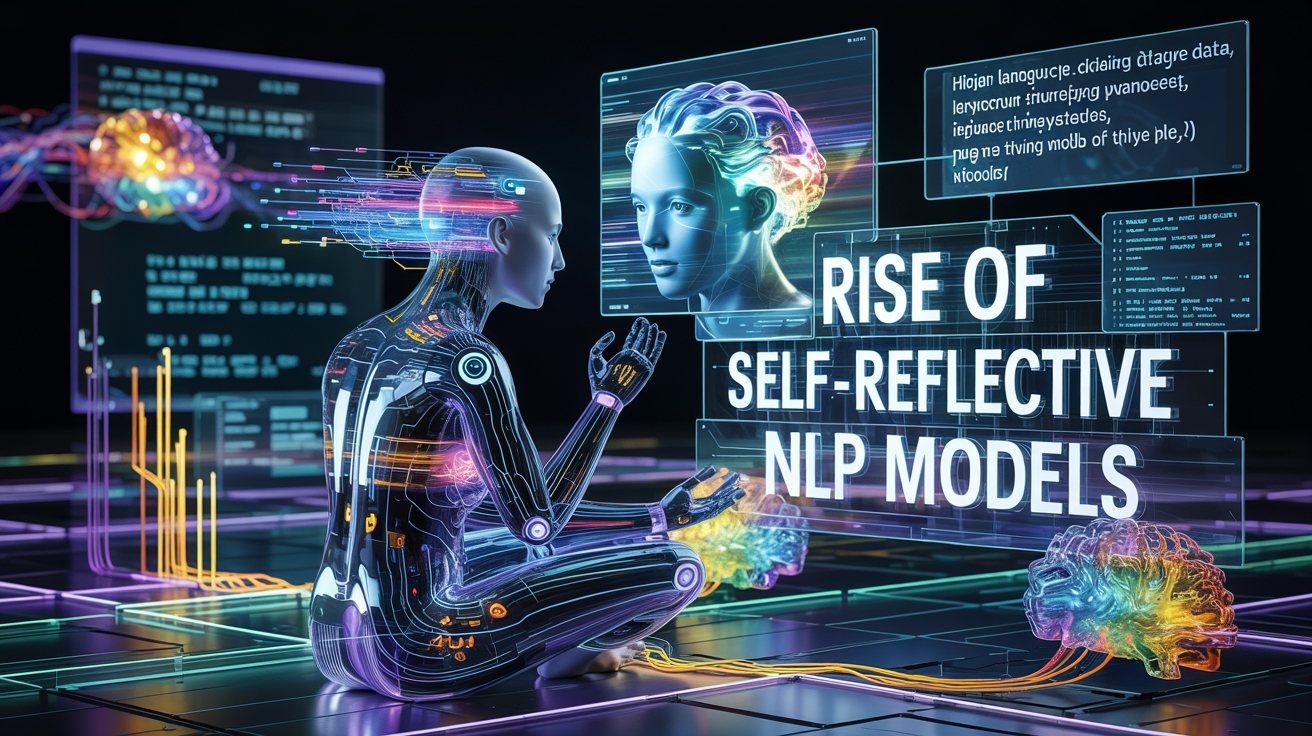Recent progress in natural language processing has been extraordinary, evolving from BERT models to more sophisticated self-reflective NLP architectures. These cutting-edge models represent a significant advancement in artificial intelligence, as they can evaluate their own outputs and reasoning processes. Unlike traditional models, self-reflective NLP systems have the capability to assess their performance, identify errors, and make autonomous improvements without requiring direct human oversight. This revolutionary capability is changing how machines understand and generate human language, opening up new possibilities across multiple industries.
The Evolution from BERT to Self-Reflection
BERT (Bidirectional Encoder Representations from Transformers) was introduced in 2018 as a revolutionary method that changed the landscape of natural language processing (NLP) by facilitating an understanding of context in both directions. Despite its success in various applications, BERT fell short in assessing its own performance and reasoning about its limitations.
Self-reflective NLP models elevate language comprehension by integrating metacognitive processes. These sophisticated systems now include:
Metacognitive Awareness
Contemporary self-reflective models exhibit a type of “awareness” regarding the limits of their knowledge. When confronted with ambiguous information, these models are able to convey suitable levels of confidence instead of misrepresenting incorrect information as truth. This ability arises from training methods that prioritize genuine uncertainty over misleading accuracy.
Iterative Self-Improvement
Self-reflective NLP systems differ from conventional models like BERT by consistently assessing their responses. They undergo several internal evaluations to enhance their outputs prior to delivering them to users. This approach resembles the way humans engage in cognitive reflection, reviewing their thoughts mentally before expressing them.
Technical Foundations of Self-Reflection
The transition from BERT to self-reflective NLP models required several technical innovations:
Recursive Processing Architectures
Self-reflective NLP models incorporate feedback loops into their neural networks. These structures enable the outputs to be reintroduced as inputs, fostering an internal dialogue that enhances the initial responses. This iterative process allows the model to effectively evaluate and improve its own performance.
Uncertainty Quantification
Contemporary systems utilize calibrated confidence scoring methods. In the process of generating responses, self-evaluating NLP models evaluate their level of certainty across various areas of knowledge. This allows them to convey not only what they understand but also, importantly, what they do not know, while maintaining suitable confidence levels.
Real-World Applications
Self-reflective NLP models are transforming numerous industries:
- Healthcare Decision Support
In medical settings, self-reflective NLP systems assist diagnostic processes while clearly communicating confidence levels. When analyzing patient symptoms, these models can identify when additional information is needed rather than making potentially harmful recommendations based on incomplete data.
- Scientific Research Acceleration
Researchers utilize self-reflective NLP models to generate hypotheses, design experiments, and interpret results. The models’ ability to critique their own suggestions helps scientists identify promising research directions with greater efficiency.
- Ethical Content Generation
Content creators leverage these advanced models to draft materials while avoiding biases. The self-reflective mechanisms help identify potentially problematic language or assumptions before they reach audiences.
The Future of Self-Reflective AI
As self-reflective NLP models continue to advance, we anticipate several developments:
- Advancements in reasoning capabilities that closely resemble human critical thinking
- Improved clarity in articulating their internal decision-making processes
- Increased flexibility in adapting to new areas without the need for extensive retraining
- More refined management of social and cultural contexts
These capabilities will further expand the practical applications of AI while addressing many ethical concerns about opaque decision-making processes.
Challenges and Considerations
Despite their impressive capabilities, self-reflective models face ongoing challenges:
- Computational demands frequently surpass those of conventional NLP methods.
- Distinguishing genuine limitations from learned limitations remains difficult
- Designing reflection processes that resonate with human values necessitates meticulous planning.
- Striking a balance between confidence and necessary caution continues to pose challenges in calibration.
Nevertheless, the trajectory of self-reflective development suggests these obstacles will gradually diminish as research progresses.
FAQs about Self-Reflective NLP Models
- What makes self-reflective NLP models different from traditional models like BERT? Self-reflective NLP models can evaluate their own outputs and reasoning processes, while traditional models like BERT cannot assess their performance or understand their limitations.
- How do self-reflective NLP models improve their own responses? These models use recursive processing architectures that create internal feedback loops, allowing them to critique and refine their initial outputs before presenting them to users.
- Can NLP models recognize when they don’t know something? Yes, through uncertainty quantification mechanisms, these models can express appropriate levels of confidence and acknowledge knowledge gaps rather than generating potentially incorrect information.
- What industries benefit most from self-reflective technology? Healthcare, scientific research, content creation, education, and customer service are currently seeing the most significant impacts from self-reflective NLP implementations.
- Will self-reflective models eventually replace human workers? Rather than replacement, these models are primarily designed to augment human capabilities by handling routine tasks and providing decision support, allowing people to focus on more creative and strategic work.
- How is the development of self-reflective models affecting AI ethics? These models address several ethical concerns by improving transparency, reducing hallucinations, and better communicating uncertainty, though they also raise new questions about machine autonomy and decision-making.
- What’s the next frontier beyond NLP models? Research is moving toward models with even more sophisticated reasoning abilities, multi-modal understanding, and improved alignment with human values and intentions.

